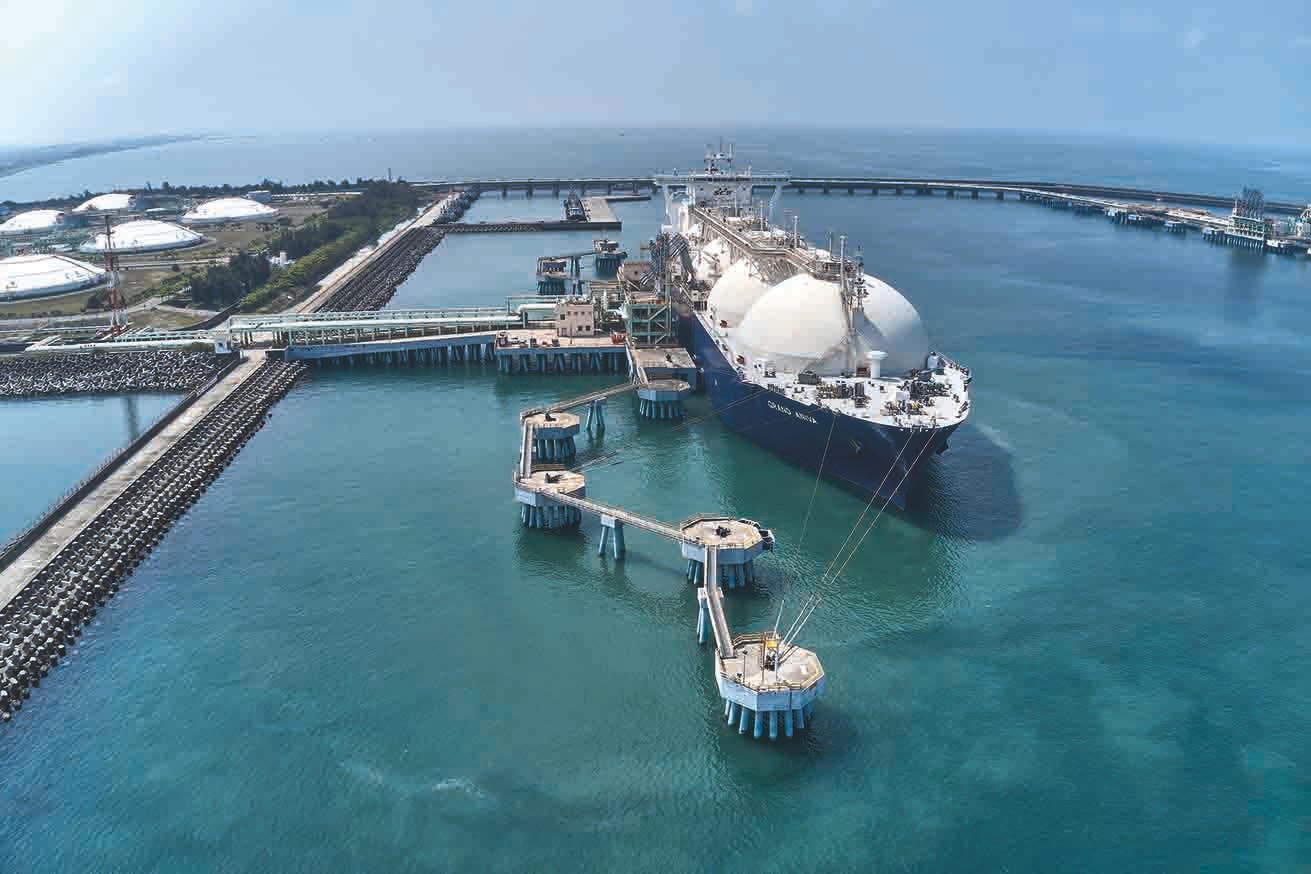Did China Threaten Taiwan’s LNG Supply?
Not only are LNG carriers defenseless, but they are highly combustible targets
By: Jens Kastner
China’s “Strait Thunder-2025A” military exercise against Taiwan in early April received worldwide media coverage for involving the People’s Liberation Army, navy, and rocket forces approaching Taiwan from multiple directions and simulating a blockade. But clashing claims within Taiwan itself went unnoticed internationally over whether China blocked a liquefied natural gas (LNG) carrier from entering the island’s main Kaohsiung Yong'an Port 400 km south of Taipei in what, if verified, would bode extremely ill for Taiwan’s energy security.
According to UDN, a Taiwanese daily supporting the China-friendly views of the opposition Kuomintang (KMT), the LNG carrier circled for nearly half a day outside the port after it received radar, broadcasting, and other instructions from China’s military not to enter. Taiwan’s defense ministry disputed the report, explaining that the carrier had to wait because it arrived too early, with Taiwanese security sources playing down the incident as a display of Chinese information warfare picked up by the KMT to discredit the government of President Lai Ching-te.
Taiwan relies on LNG for 42 percent of its electricity generation, with LNG stockpiles projected to last only eight days due to the phase-out of nuclear power decided by Lai’s Democratic Progressive Party (DPP) in the wake of the Fukushima nuclear disaster in Japan in 2011.
“Anyhow, China's military drills have demonstrated that its blockade of Taiwan works already, and this should also prove that Taiwan's defense of its own gas supply is useless,” said Zhang Junhua, a Senior Associate at the European Institute for Asian Studies, on his LinkedIn account.
“China's drills at any time can cut off the energy, and the entire people's livelihood will be affected.”
UDN cited Yong'an Port insiders who dismissed the widespread notion that China would first attack the iconic Taipei 101 skyscraper or the Presidential Palace, with the real top target “definitely being Keelung Port, because Keelung Port is both a military port and an LNG commercial port.”
Lending support to the blockade report, the PLA during the “Strait Thunder-2025A” exercise released a propaganda video depicting 16 missile strikes on a mock compound resembling the LNG storage facility in Yongan, signaling Chinese intent to disable the island’s LNG supply in the early stages of a potential invasion. Other propaganda images showed six missiles over a map of Taiwan’s other LNG terminals.
Huang Tsung-ting, a Taiwanese defense analyst, recently wrote on social media that China’s military buildup in the southern portion of the First Island chain poses a serious threat to Taiwan’s LNG supply. Beginning last year, China entrenched its position in the southern region of the first island chain, often with Russia’s active support, Huang wrote.
Timothy R. Heath, Senior International Defense Researcher at RAND Corporation, told Asia Sentinel that “not only are LNG carriers defenseless, but they are highly combustible targets. In war, they would be extremely vulnerable.”
Hung Tzu-Chieh, an associate research fellow at the Institute for National Defense and Security Research, a public think tank in Taipei, pointed out that the scenario of the PLA blocking Taiwanese LNG carriers would already constitute an act of war and could lead to further military escalation.
“However, if China were to use other non-military measures, such as invoking quarantine procedures to delay or isolate vessels, Taiwan would likely respond with countermeasures, such as escorting LNG carriers to prevent harassment by Chinese ships,” Hung said.
These precarious developments come amid the growing awareness that there is something very wrong happening with the way the US is being managed. The ongoing stock market turbulences triggered by US President Donald Trump’s “Liberation Day” tariff announcement suggests that there is only one decision maker in the Trump administration, and he is proving too erratic.
“None of this will be missed by the Chinese. If America is really in a state of dysfunction -- which I think is the fundamental reason investors are pulling money out of its stock market, the time is right for China to move against Taiwan,” a Hong Kong-based tech strategist told Asia Sentinel on condition of anonymity.




Interesting if true, but if a blockade against Taiwan's seaborne energy shipments were to be actually put into action it would almost definitely trigger political and military reactions from Japan and South Korea, both of which are also heavily if not exclusively reliant on seaborne energy shipment routes and tankers that also travel the same route which services/goes past Taiwan.
The perfect excuse for neutrality patrols by the JMSDF/ROKN/USN if you ask me, and the absolute last thing China and the PLA/PLAN wants if they actually intend to attempt an amphibious invasion of Taiwan: lots and lots of foreign grey-hulled naval warships around the Taiwan Straits and the South China Sea.
Should Taiwan be worried? Absolutely, but no more or less so than South Korea, Japan, and even China (because much as China has tried to build up overland pipeline routes to make up the majority of its energy imports and negate the significance of a US blockade of the Malacca Straits against Chinese seaborne trade/energy shipping, they're not there yet).
Another point of note is that most of these LNG carriers like all other commercial cargo vessels today are sailing under flags of convenience, registered officially under the jurisdictions of mostly Global South/developing countries like Panama and the Marshall Islands etc. All it takes is China damaging or even sinking one such vessel by accident/on purpose, and they can immediately kiss goodbye to a big chunk of goodwill it has painstakingly built up with the Global South and damage significantly any hopes they have of fragmenting international opinion at the UN towards any attempts at invading and conquering Taiwan.